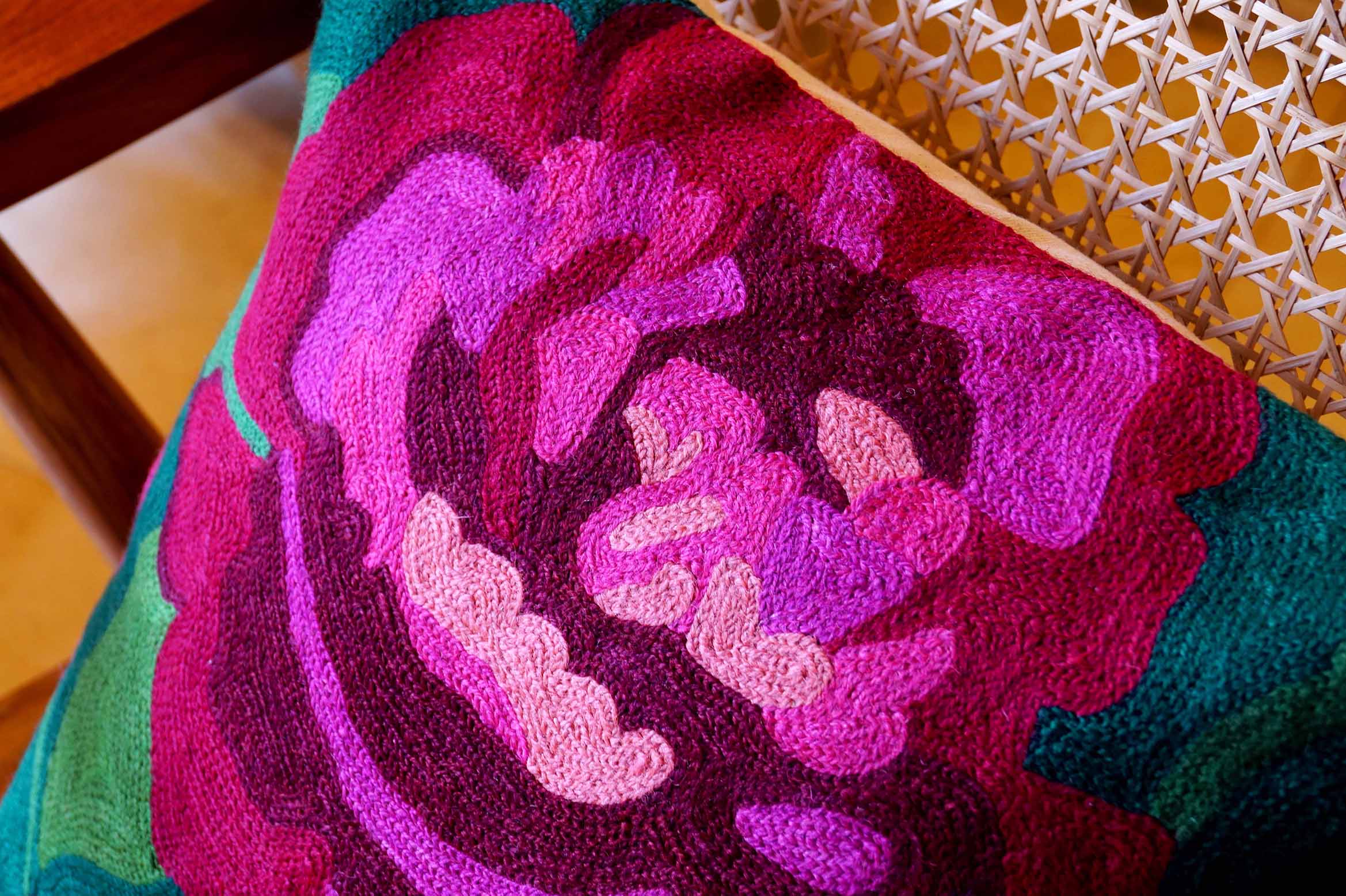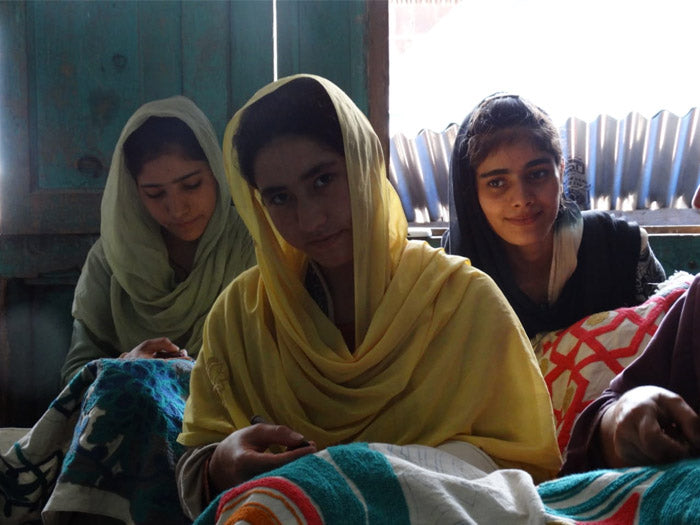Our hands versus machines - when we talk about Kashmiri hand embroidery
Kashmiri hand embroidery is well known throughout the world for its unique beauty and stunning finish. Though it’s a traditional art form, it has been well revived by contemporary design ideas.

Cushion covers and a rug which have been created using this traditional art with a contemporary feel by Zaina by CtoK. Shop for a range of contemporary hand embroidered chain stitch rugs and cushion covers
So what’s so special about Kashmiri hand embroidery? It’s created using chain stitches and a special hook called “aari” that is pushed up from under the fabric along with the thread. Talented artisans craft some fabulous, cushion covers, rugs and other products using this technique. Now imagine this: over 350,000 stitches are hand embroidered on a medium-sized rug by a talented Kashmiri artisan!

A closer look at the process of Kashmiri hand embroidery using a special needle called “aari”.
Why take the trouble?
Now, why make hundreds of thousands of chain stitches to create one beautiful piece of cloth? Why not use a machine to churn out hundreds of cushion covers or rugs and make the job so much easier? Technological advances have meant that there are versatile machines available to create one design after another and it’s certainly quicker than hand embroidery.
The answer, I found out, lies in the numerous differences in the finished product of these two methods and this starts from the kind of thread used.
How thread type makes a difference
For starters, hand embroidery uses thicker threads and so the motif is not so tightly woven which makes it blossom beautifully. Whereas, in machine embroidery, the thread is quite fine and so the embroidery is tightly woven. This makes it thick and harder – and just not as open. The hand embroidery artisan who collaborated with Zaina by CtoK, Jahangir Bhatt, explained it to me well. “Design poori tarah se khilta nahin hai,” he said of machine embroidery. (“The design doesn’t bloom out fully.”)
 The thicker threads used for hand embroidery
The thicker threads used for hand embroidery
A knotty finish
Another aspect of the difference is the durability of the finished product. Every time the artisan changes the thread in hand embroidery, the end is secured by a knot under the cloth. This makes the embroidery stronger and so more durable. But machine embroidery can be less durable since there are no knots when one part is completed. Any of us who have used a sewing machine, know that once you finish the stitching, you just stop and cut the thread off. There are no knots tied. When we talk about home décor, it’s really important that anything that looks pretty around our home is also strong enough to withstand everyday use. That is always an important criterion for all handicrafts created for Zaina by CtoK. These hand-embroidered chain stitch cushions offer both aesthetics and durability.
 A view of inside the cushion cover where all stitches are superbly finished and knotted.
A view of inside the cushion cover where all stitches are superbly finished and knotted.
All the colours of the rainbow
Shall we look at colours now? Any embroidery gets its depth and beauty from the coloured threads that are used to embroider. What I was wonderstruck about was that when it comes to hand embroidery, it’s possible to use seven or sometimes even more different threads, to create a motif - this means that several shades of one colour can be used to create a single flower – pink, light pink, baby pink, magenta etc. Each of these Kashmiri hand-embroidered cushion covers you see has so many shades used. Notice how rich and pretty the embroidery of the cushion cover design can be! In machine embroidery usually, a fewer number of coloured threads are used to reduce complexity – clearly making it a distant second in the race for gorgeousness.

With the depth in their design, colourful floral motifs makes for a stunning décor
Motifs have an important motive
This leads me to the motifs. Difficult and complex motifs are quite possible to create using hand embroidery – for example, floral patterns on cushion covers and rugs. One just has to look at how stunning they can look in your living room to know the painstaking effort that has gone into creating them. Whereas it is usually a simpler, flatter geometric pattern that is preferred for machine embroidery.
What’s truly exceptional about these hand-embroidered floral rugs and cushion covers is that they look equally breathtaking in modern contemporary homes as they do with traditional home décor. The designers who work with Zaina by CtoK, firmly believe in the versatility of the motifs and help create some inspired designs.
Slow fashion that lasts forever
The timeless nature of the motifs, the durability of hand crafted products and the thoughtful and skillful way that these accessories are created, their sheer, striking beauty are only some of the reasons which make it worthwhile to invest in them. When we invest in handcrafted, we invest in slow and sustainable fashion that lasts forever.
Building sustainable support systems
Kashmiri chain stitch hand embroidery involves whole communities working together, sharing laughs and stories old and new and supporting each other like a family.
 Many hands make light work - artisans embroidering together in a community
Many hands make light work - artisans embroidering together in a community
When people get together to create products, they end up creating relationships too. This is why handcrafted is so special - it’s made with love and care by talented artisans.
You just have to cast your eye here on how special all of the Kashmiri hand-embroidered accessories are. It will be hard to decide which ones to adorn your home with – that’s a promise!

Shop for the collection at www.zainabyctok.com
Written by Supriya Subramanian for Zaina by CtoK.
1 comment
Well written piece to highlight the intricacies of making the designs by hand stitching with patience and diligence. As the author rightly says that the beauty of the finished products is enhanced by the amount of love shown in the hard work. Same as the case with food which when prepared with love becomes more delicious!

















